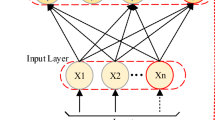Abstract
In underbalanced drilling, accidents like well leakage and overflow not only damage the reservoir but cause great safety risks to drilling operations. Therefore, it is of great engineering significance to maintain a reasonable under-pressure state by controlling a reasonable underpressure value. Data mining is an advanced method for retrieving and creating corresponding models in massive data. During the drilling process, there are a large number of real-time monitoring data and historical data. Therefore, a neural network prediction control model based on improved rolling optimization algorithm has been proposed. Combined with control principle of underpressure value, a set of online rolling optimization neural network control model for achieving underpressure value intelligent control of underbalanced drilling is formed. The control model optimizes the neural network prediction control model through the rolling optimization algorithm, realizing advanced prediction of reasonable underpressure value, and performs fast and stable self-feedback control of the output prediction results. By using field data for optimization analysis, the analysis results show that using the neural network prediction control model of online rolling optimization can effectively conduct accurate prediction and real-time control for the reasonable underpressure value.



































Similar content being viewed by others
References
Annunziatio M, Abarbanel HDI (1999) Nonlinear dynamics for classification of multiphase flow regimes. Proc. Int. soft computing. IIA/SOCO, Genova, pp 1–7
Binchini M, Frasconi P, Gori M (1995) Learning without local minima in radial basis function networks. IEEE Trans Neural Netw 6(3):749–756
Cai Y, Xiao C, Hou Q, Li H (1994) Application of neural network to identify formation properties. Well Logging Technology 06:424–430
Chen T, Chen R (1995) Universal approximation to nonlinear operators by neural networks with Arbitary activation functions and its application to dynamic system. IEEE Trans Neural Netw 6(4):911–917
Chen J, Han H, Liu H (1991) Evaluation of pressure difference calculation method for vertical gas-liquid two-phase pipe flow. Acta Pet Sin 04:120–126
Fan J, Chen G, Gao C et al (2000) Underbalanced drilling theoretical model and application. Acta Pet Sin 21(4):75–79
Gao J (2003) Artificial neural network theory and simulation examples. China Machine Press, Beijing, pp 182–183
Gao ZK, Jin ND (2012) Characterization of chaotic dynamic behavior in the gas-liquid slug flowusing directed weighted complex network analysis. Physica A 391:3005–3016
Hagn MT (2000) Neural Network Design. China Machine Press, Beijing, pp 123–124
Haibo L, Xiaodong W, He Z et al (2013) Application of a fuzzy neural network based on particle swarm optimization in intermittent pumping. J Water Resour Water Eng 62(1):55–65
He Z, Qiying L, Luzhi Z et al (2016) Intelligent early warning technology based on fuzzy expert system [J]. Journal of Southwest Petroleum University Natural Science Edition 38(2):169–175
Jain AK (1994) Neural network and pattern recognition [J]. Computational Intelligence Imitating Life. pp 194–212
Liang H, Li G, Liang W (2017) Intelligent early warning model of early-stage overflow based on dynamic clustering. Clust Comput 3:1–12
Lyons JL (1991) Valve technical manual [M]. China Machine Press 57–70
Nicken HVA (1985) A dynamic model of a kicking well: part-the theoretical model. SPE 14183:3–5
Nielsen HR (1989) Theory of the backpropagation neural network[M]// Neural networks for perception (2):593–605
Park SH, Kang Y, Kim SD (2001) Wavelet transform analysis of pressure fluctuation signals in a pressurized bubble column. Chem Eng Sci 56:75–79
Shi X, Tang J, Li M, Huang T (1994) A study of artificial neural network method for well layer discrimination. Well Logging Technology 06:424–430
Wang Q, Yu Y, Zhang H (2002) Function approximation using artificial nueral networks[J]. Computer Simulation 19(5):44–47
Wang D, Li L, Wang Q et al (2006) Dynamic analysis of electric hydraulic proportional valve throttle control system. Special Oil and Gas Reservoirs 13(6):101–105
Wang D, Mei D, Liu H et al (2006) The application of industrial control machine in multistage throttle control system. Computer Measurement and Control 14(9):1173–1182
Wasserman PD (1989) Neural computing: theory and practice[M]. Van Nostrand Reinhold 29(17)
Zhang T, Li J, Liu G et al (2014) Study on the pressure regulating characteristics of automatic throttle manifold of controlled pressure drilling. Petroleum Drilling Techniques 42(2):18–22
Zhao Z, Xu Y (1997) The foundation and application of fuzzy theory and neural network. Tsinghua University Press, Beijing
Zheng G, Jing N (2009) Analysis of multiscale entropy and dynamic characteristics of two-phase flow pattern. Acta Phys Sin 58(7):4485–4492
Acknowledgements
This work wos supported by the Young Scholars Development Found of SWPU(No.201599010079) and Sichuan Province Applied Basic Research Project(No.2016JY0049).
Author information
Authors and Affiliations
Corresponding author
Ethics declarations
Conflicts of interest
None.
Additional information
Publisher’s Note
Springer Nature remains neutral with regard to jurisdictional claims in published maps and institutional affiliations.
Rights and permissions
About this article
Cite this article
Haibo, L., Zhenglin, L. & Guoliang, L. Neural network prediction model to achieve intelligent control of unbalanced drilling’s underpressure value. Multimed Tools Appl 78, 29823–29851 (2019). https://doi.org/10.1007/s11042-018-6384-8
Received:
Revised:
Accepted:
Published:
Issue Date:
DOI: https://doi.org/10.1007/s11042-018-6384-8




